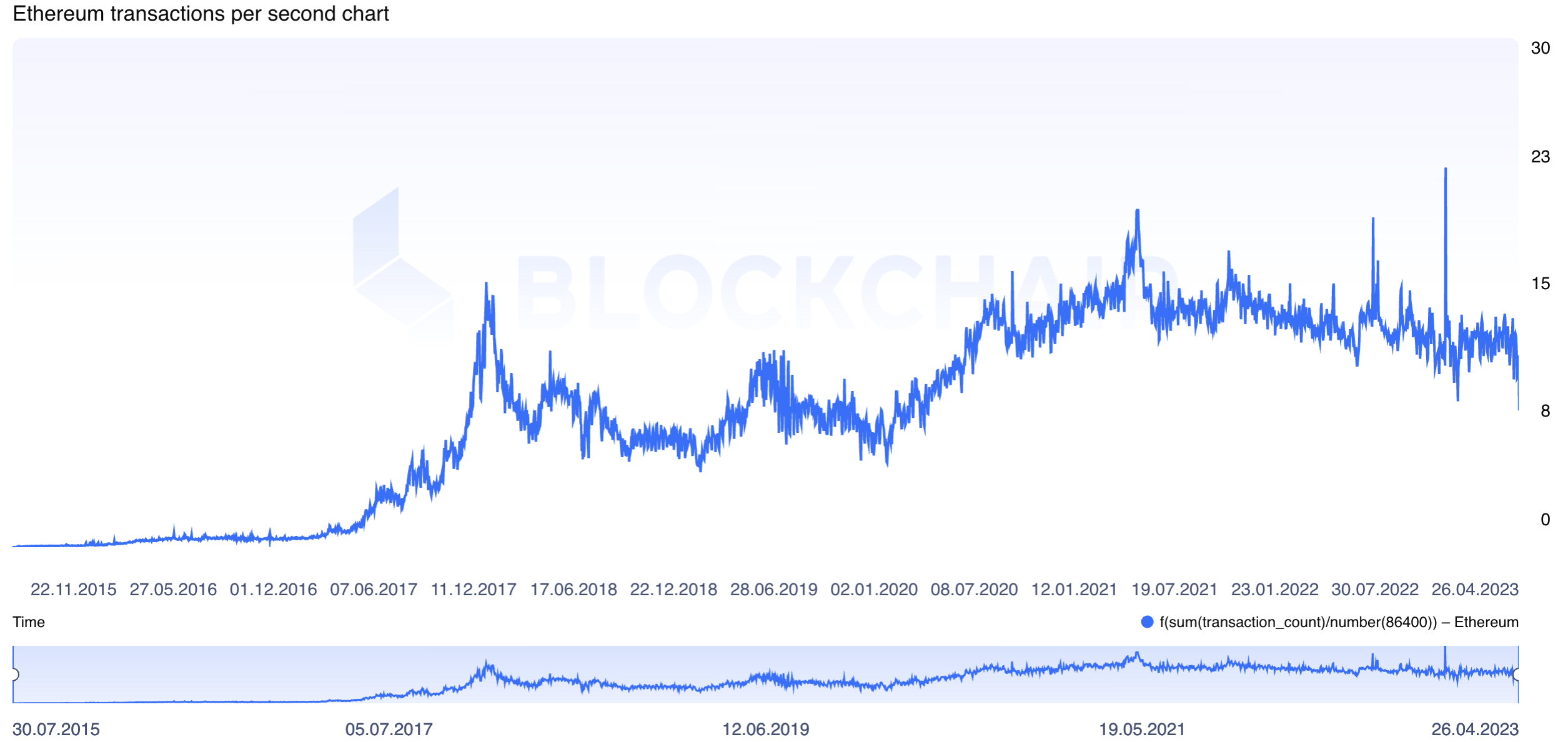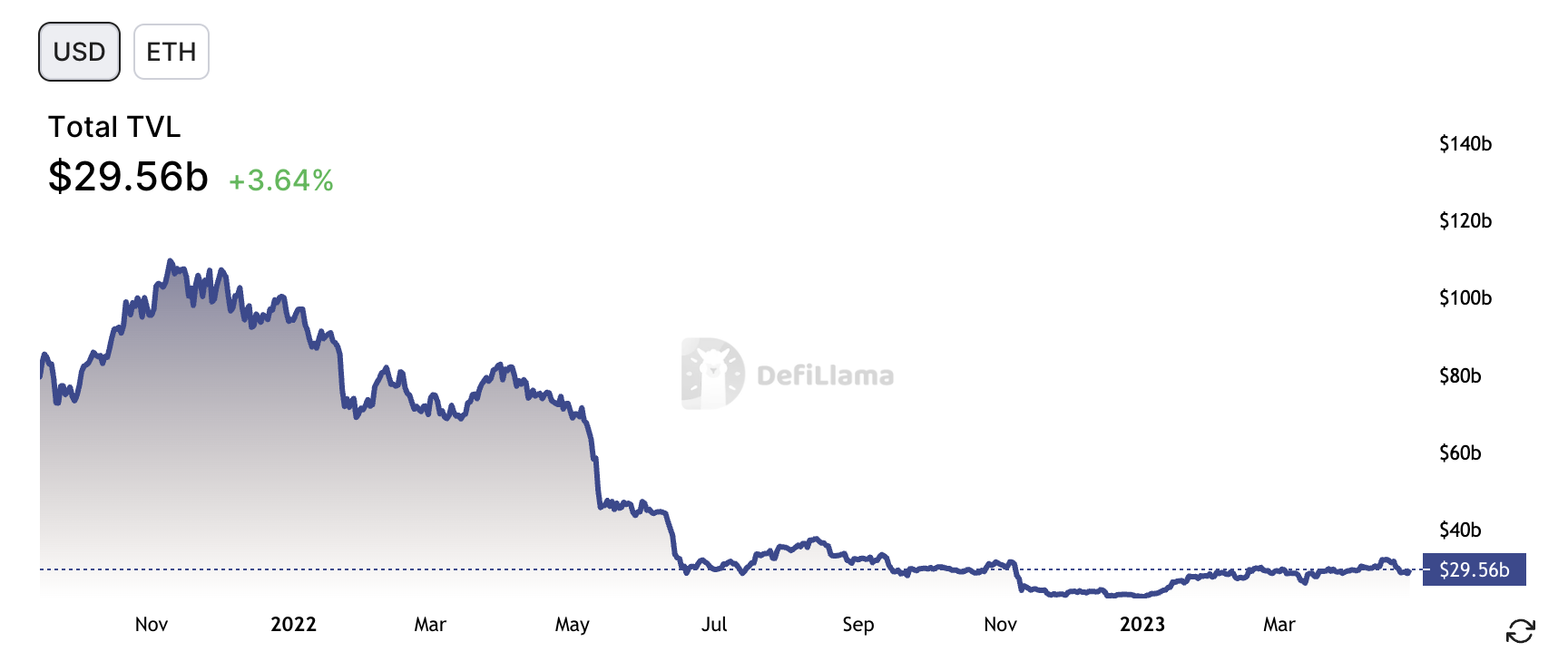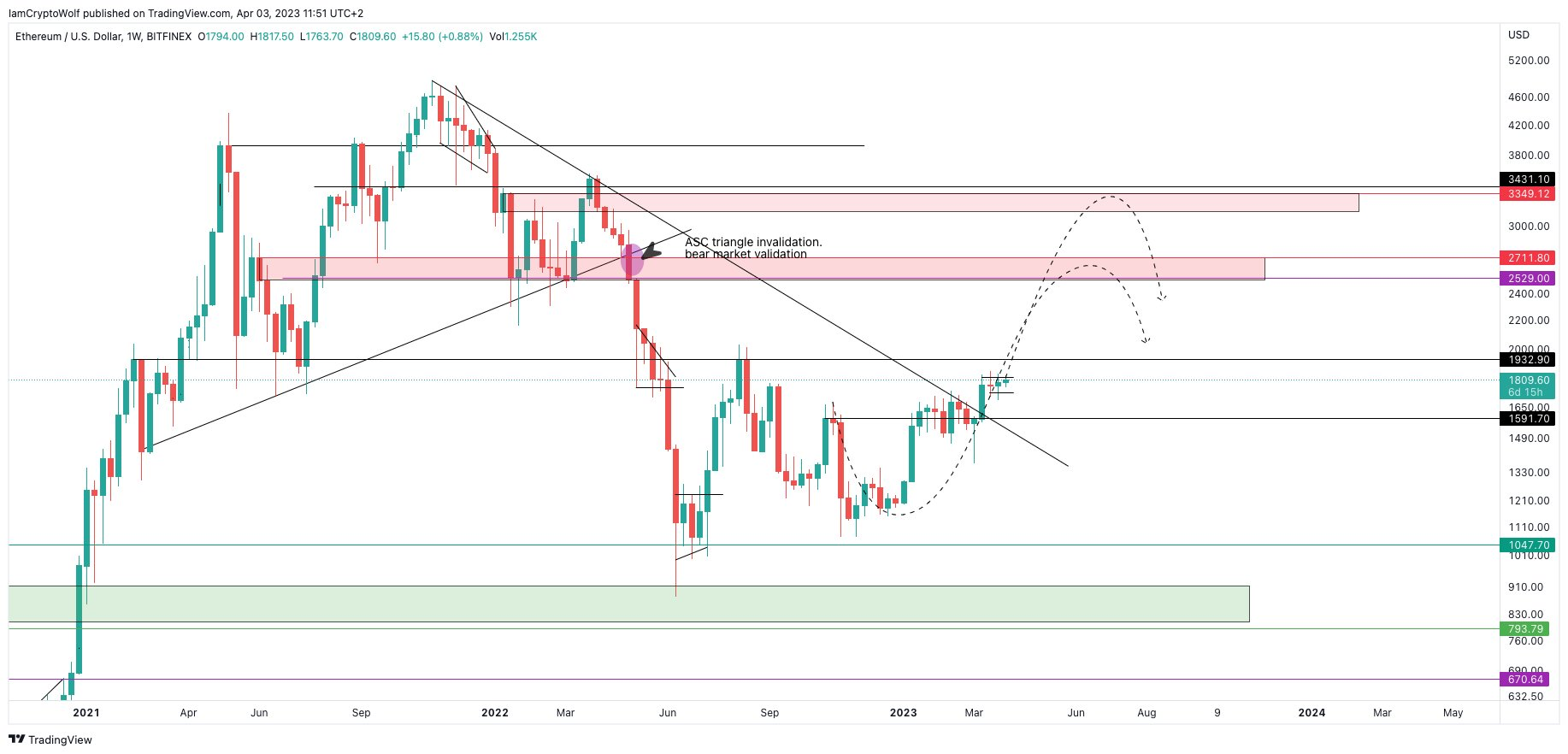Ethereum has been a major player in the crypto market since its inception in 2015. With its innovative smart contracts and decentralized applications, Ethereum quickly became the second-largest cryptocurrency by market cap.
But what’s next for Ethereum in 2023? What’s the potential X-Factor that could propel Ethereum’s price to new heights?
Ethereum’s Journey
Brief History
Ethereum was created by a group of developers led by Vitalik Buterin, aiming to build a platform for decentralized applications using smart contracts.
SponsoredIts initial coin offering (ICO) in 2014 raised $18 million and went live in 2015. Since then, Ethereum has witnessed tremendous growth, becoming the go-to platform for countless projects in the blockchain ecosystem.
Ethereum 2.0
Ethereum 2.0, also known as Eth2 or Serenity, was a major upgrade to the Ethereum blockchain. It aimed to address scalability, security, and energy efficiency issues. The goal was to implement a new consensus mechanism called Proof of Stake (PoS) and sharding technology.
Ethereum 2.0 is currently in progress, with its multiple phases expected to be completed in the coming years.
The X-Factor: Layer 2 Scaling Solutions
What are Layer 2 Solutions?
Layer 2 scaling solutions are off-chain technologies built on top of the Ethereum blockchain. They allow transactions to be processed more quickly and cheaply by moving them off the main blockchain.

The main goal of Layer 2 solutions is to increase Ethereum’s transaction throughput, reducing network congestion and lowering transaction fees.
Popular Layer 2 Solutions
Some of the most popular Layer 2 scaling solutions currently in use or under development include Optimism, Arbitrum, and zkSync.

These solutions leverage different techniques, such as Optimistic Rollups and Zero-Knowledge (zk) Rollups, to improve the network’s scalability.
DeFi and NFTs: Catalysts for Ethereum’s Growth
Decentralized Finance (DeFi)
Decentralized finance, or DeFi, is an emerging financial sector built on blockchain technology. It seeks to replace traditional financial institutions with decentralized, peer-to-peer alternatives.

Ethereum’s smart contracts are the backbone of many DeFi projects, such as lending platforms, decentralized exchanges, and tokenized assets. As DeFi continues to grow, the demand for Ethereum’s network increases, driving up its value.
Non-Fungible Tokens (NFTs)
Non-fungible tokens (NFTs) are unique digital assets representing art, music, or virtual real estate ownership. NFTs have gained significant popularity in recent years, becoming a major driver for Ethereum’s growth.
As the leading platform for NFTs, Ethereum benefits from the increased demand for NFT creation, trading, and ownership, positively impacting its price.
SponsoredInstitutional Interest in Ethereum
Institutional investors have been increasingly interested in Ethereum as an investment and store of value.
Major financial institutions like J.P. Morgan and Goldman Sachs have recognized Ethereum’s potential. These corporations have started offering investment products based on cryptocurrency.
As more institutions invest in Ethereum, its price is likely to continue rising.
Ethereum’s Future Potential
Ethereum’s future potential is immense, with ongoing scalability, energy efficiency, and security improvements. Indeed, the successful implementation of Ethereum 2.0 and Layer 2 scaling solutions will likely attract more developers, users, and investors to the platform.
Additionally, the growth of DeFi, NFTs, and other decentralized applications will further solidify Ethereum’s position as a leading blockchain platform.
Ethereum Price Forecast and Opportunities
Several industry experts have also weighed in with their Ethereum price forecast for 2023, painting a bright picture for the cryptocurrency.
Raoul Pal, CEO of Real Vision Group, predicts Ethereum could reach $20,000 by 2023, driven by the platform’s continued growth and innovation.
Sponsored SponsoredMeanwhile, crypto analyst and trader Michael van de Poppe estimates that Ethereum could reach between $2,700 and $3,000 in the next few months. He attributes this growth to the adoption of DeFi, NFTs, and upcoming Ethereum upgrades.
A renowned analyst under the pseudonym Wolf also predicts that Ethereum could hit $3,500 by the end of Summer 2023. He cites increasing demand for decentralized applications (dApps) and Ethereum’s dominance in the DeFi and NFT spaces.

Lastly, Brian Schuster, the founder of Ark Capital LLC, presents an even more optimistic outlook, suggesting that Ethereum could displace many traditional financial services, with its native token, Ether, competing as global money and potentially capturing a portion of the $123 trillion in global Money and quasi-money (M2).
Challenges and Risks
Despite its promising future, Ethereum faces challenges and risks. These include potential delays in the Ethereum 2.0 rollout, competition from other blockchain platforms, and regulatory hurdles.
However, if Ethereum can navigate these challenges, it stands to reap significant benefits from its growing ecosystem.
Summing All Up
The X-Factor that could help Ethereum price forecast in 2023 is successfully implementing Layer 2 scaling solutions.
Therefore, these solutions, combined with the ongoing Ethereum 2.0 upgrade, DeFi and NFT growth, and increasing institutional interest, can significantly increase Ethereum’s transaction throughput. With this, network congestion can be reduced, achieving lower transaction fees.

